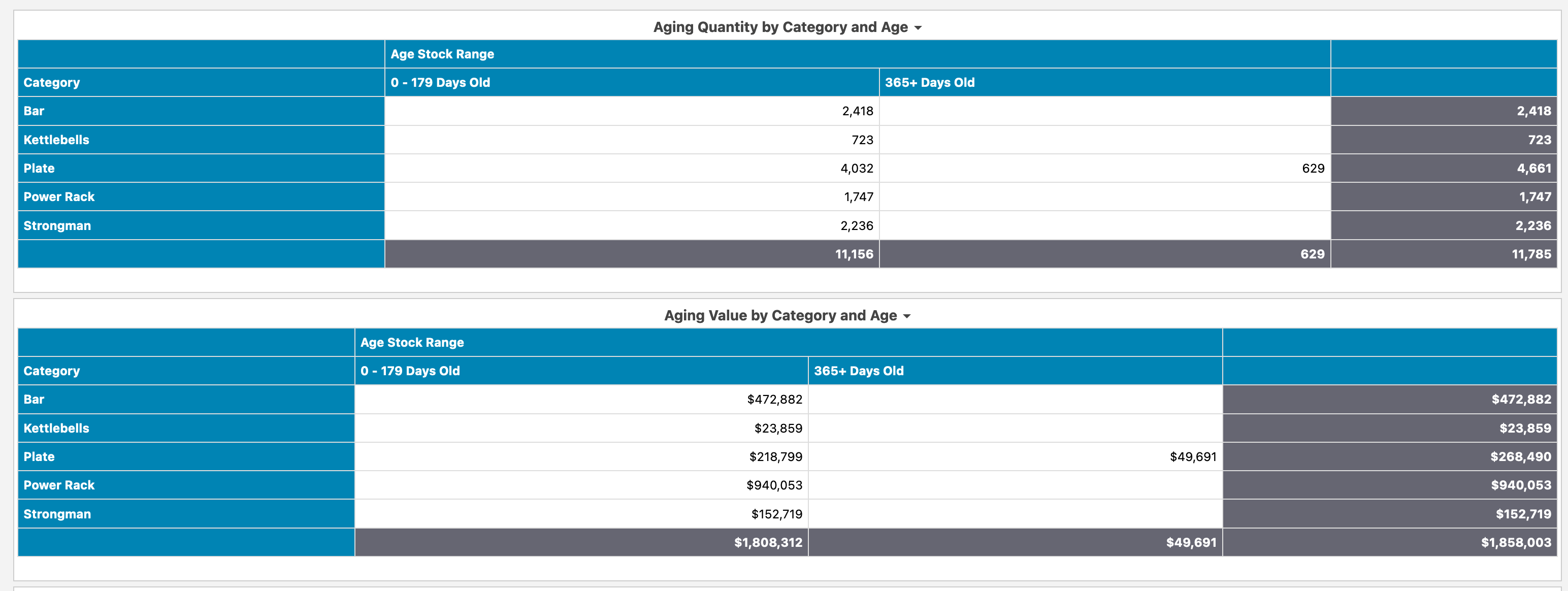Dead stock refers to inventory that has not sold within a specific timeframe and is unlikely to be sold in the future, often resulting in lost revenue and storage costs for the business.
You can identify dead stock by analyzing inventory turnover rates, tracking sales data over a set period (typically six months to a year), monitoring product age, and identifying items that have not moved or been sold. Additionally, reviewing seasonal sales patterns and customer demand can help pinpoint products that are no longer in demand or relevant. If certain items consistently show low sales and have been in stock for an extended time, they are likely dead stock.
To clear out dead stock, you can implement several strategies, including:
By actively managing and promoting these strategies, you can effectively reduce dead stock and free up valuable inventory space.
Easy Insight's out of the box dashboards for inventory management systems include a page for identifying aging quantity and value. You can look at this data by category, brand, product tag, or anything else that makes sense:

You can click to dig into the underlying aging stock to find out when and where the stock came from.

Want to learn about other inventory metrics? See Metrics for other ways to help measure and improve your business.